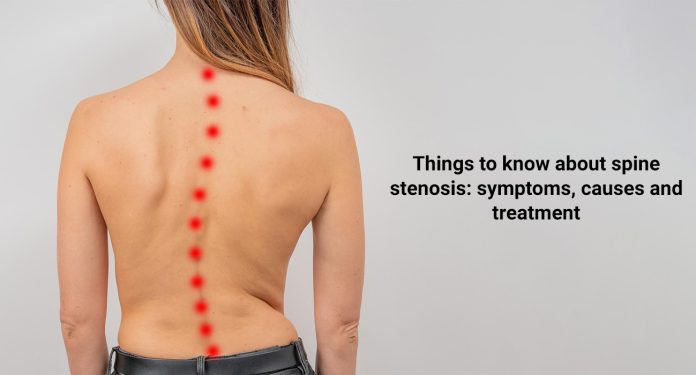Estimated reading time: 0 minutes
Is your back, arm, or leg pain intermittent and reliant on what you’re doing? This symptom may indicate spinal stenosis.
Spinal stenosis occurs when the bony apertures for your spinal nerves (foramen) and/or spinal cord (central canal) grow narrow. This constriction, which can occur anywhere along your spine, has the potential to compress your spinal cord and/or spinal nerves. Spinal stenosis is a condition that primarily affects persons over the age of 60 and worsens over time.
If you suspect you have spinal stenosis, these are six common signs and symptoms to look out for. Depending on the type and location of the stenosis, one or more of the following symptoms may be experienced:
1. Claudication as a result of neurogenic causes
When nerves in your lower back become compressed, you can experience neurogenic claudication in your legs. Neurogenic claudication is distinguished by the following symptoms:
Constant leg pain and/or numbness when standing
Leg pain and/or numbness after long distance walking or bending your spine backwards
Difficulties performing upright workouts or activities
Rest relieves or removes pain and/or numbness.
Bending your spine forward (as when leaning on a shopping cart/walker, squatting, or sitting and leaning forward) frequently relieves pain from neurogenic claudication.
This pain must be separated from vascular claudication, which may mimic neurogenic claudication.
2. Sciatica discomfort
Depending on which nerve roots are involved, compression of the nerve roots in your lower back may result in lumbar radiculopathy or sciatica. Sciatica is distinguished by nerve pain and weakness in only one leg.
Depending on the nerve root(s) damaged, pain may develop in your lower back, buttock, thigh, calf, leg, and/or foot. In pain-affected areas, pins and needles, tingling, weakness, and/or numbness may emerge.
3. Foot drop
Foot drop due to motor weakness may develop from compression of the L4 and L5 nerve roots in the lower spine. This condition frequently causes a feeling of weakness when attempting to lift the foot and/or toes upward. As a result, the person may unintentionally drag or trip while walking.
Walking on tiptoes may cause weakness due to S1 nerve root compression.
4. Problems with gait
Spinal stenosis can restrict walking in a variety of ways, depending on where it develops in the spine:
Lumbar spinal stenosis (in the lower back) can induce foot drop. Thigh and leg muscular weakness, particularly in the quadriceps and calves, may also result from the syndrome.
Cervical spinal stenosis (in the neck) with spinal cord compression can make walking difficult, particularly at night. Gait imbalance, on the other hand, is not induced by cervical spine stenosis with a pinched nerve.
Changes in gait may be too modest to notice at first. Over time, the condition may appear as increasing falls.
5. Radiating arm pain
Cervical spinal stenosis can cause burning or electric shock-like pain in the neck, shoulder, and/or arms. Normal feelings such as tingling, crawling, and/or numbness may occur in both hands. The arms and hands may be unsteady.
Fine motor skills impairment
Cervical spine stenosis can make it difficult to do tasks requiring fine motor skills in the hand, such as buttoning a shirt. In the advanced phases, writing may become difficult, finally making holding a pen impossible.
If these symptoms sound familiar, see your doctor right away because untreated spinal stenosis can worsen.
Symptoms and indicators of spinal stenosis
Red flag signs of substantial spinal stenosis include bowel and/or urine incontinence, numbness in the inner thighs and genital area, and/or significant weakness in both legs.
These symptoms indicate a serious medical problem, such as cauda equina syndrome, which must be treated right once to avoid permanent loss of leg function.
Options for treating spinal stenosis
A medical specialist must perform an adequate diagnostic to determine the underlying cause of spinal stenosis. Your doctor may offer nonsurgical therapies such as physical therapy, pain medications, and/or activity restriction depending on the nature and severity of your disease.
Contact us at EliteAyurveda for non Surgical methods of treatment using Herbal Ayurveda & Panchakarma procedures.
Related-
Know more about Ayurvedic Spinal Disk & Radiculopathy Treatments.
GET IN TOUCH


Recent comments